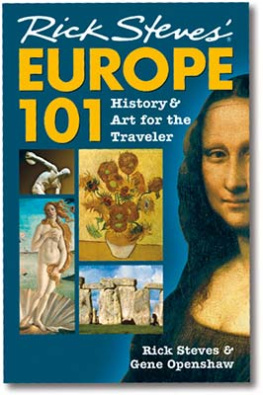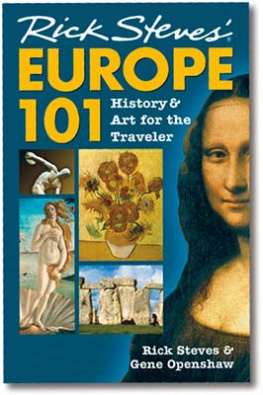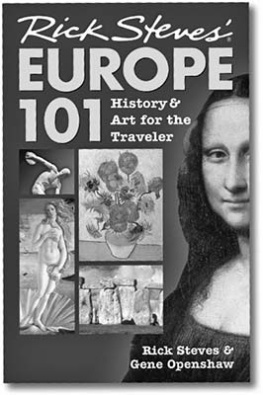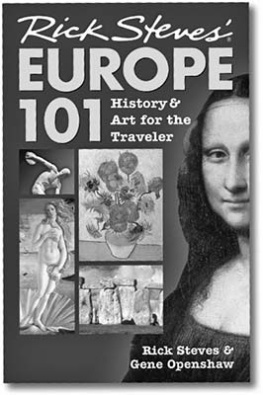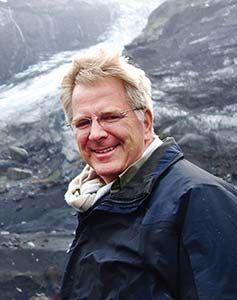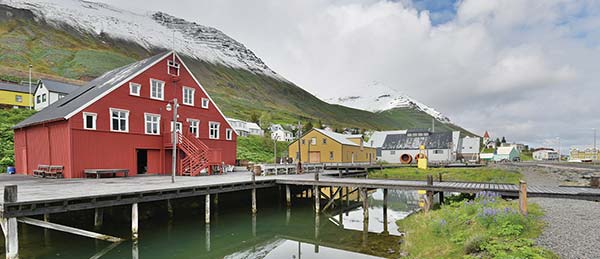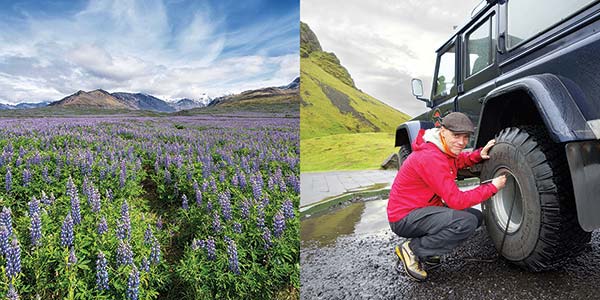Contents
Contents
Rick Steves
ICELAND
Rick Steves & Ian Watson with Cameron Hewitt
Travel is intensified livingmaximum thrills per minute and one of the last great sources of legal adventure. Travel is freedom. Its recess, and we need it.
I discovered a passion for European travel as a teen and have been sharing it ever sincethrough tours, my public television and radio shows, and travel guidebooks. Over the years, Ive taught thousands of travelers how to best enjoy Europes blockbuster sightsand experience Back Door discoveries that most tourists miss.
This book offers a balanced mix of Icelands glaciers, volcanoes, spectacular scenery, and fjordside villages. And its selectiverather than listing dozens of thermal swimming pools, I recommend only the best ones. My self-guided drives, town walks, and museum tours give insight into the countrys unique geology, vibrant history, and todays living, breathing culture.
I advocate traveling simply and smartly. Take advantage of my money- and time-saving tips on sightseeing, transportation, and more. Try local, characteristic alternatives to expensive hotels and restaurants. In many ways, spending more money only builds a thicker wall between you and what you traveled so far to see.
We visit Iceland to experience itto become temporary locals. Thoughtful travel engages us with the world, as we learn to appreciate other cultures and new ways to measure quality of life.
Judging from the positive feedback I receive from readers, this book will help you enjoy a fun, affordable, and rewarding vacationwhether its your first trip or your tenth.
Ga fer! Happy travels!
Iceland, the land of the midnight sun and the northern lights, is equally famous for its magnificent glaciers and its active volcanoes. Magma bubbling up between tectonic plates formed this rugged island, leaving it stranded halfway between North America and Europe. Until recently a poor, backward corner of Scandinavia, today its one of Europes most expensive countries. Over the last few years, Iceland has vaulted from obscurity to become one of the planets trendiest placesa cant-miss destination for curious travelers.
With its stunning natural wonders, kind and gregarious people, and unique attractions, this little island stubbornly exceeds the lofty expectations of its many visitors. Most peoples single biggest regret after visiting Iceland? That they tried to squeeze it into just a day or two, instead of investing the time to see more of its striking landscape.
Iceland floats alone where the North Atlantic and Arctic oceans meet, just a smidge below the Arctic Circle. Its closest neighbors are Greenland, to the west, and the Faroe Islands, to the southeast. The remote island was uninhabited until the ninth century, when, at the height of the Viking Age, it was settled by farmers looking for a good place to graze their sheep. It remained a land of isolated farms for about a millennium. Up until the late 1800s, Iceland had very few towns aside from Reykjavk. If you stay in the countryside today, you can get close to the agrarian Iceland that existed for centuries. Some farms have a storied history, going back hundreds of years.
Fields of lupine in Icelands southeast corner; a monster truck gets you into the interior Highlands.
Social movements that sparked upheaval elsewhereChristianization, Reformation, independencearrived in Iceland with strangely little fuss. The countrys Viking Age roots and its historic connections to Norway and Denmark give it an unmistakably Nordic aura, while the long-time presence of an American naval base developed Icelands affinity for all things Yankee. Today, Iceland feels like it has one foot in Europe, and the other in America.
About 830 miles across, Iceland is roughly the size of Maine and smaller than the island of Great Britain. More than half of the country is uninhabited tundra (in the interior Highlands). Almost all of its 340,000 residents live near the coastline, and two-thirds of Icelanders reside in the capital region of Reykjavk, on the southwest coast.
For the traveler, Reykjavk is the natural jumping-off point for exploring Icelands dramatic countryside. Its an easy hop from Reykjavk to the inland Golden Circle route, studded with natural and historic attractions (from geysers to thundering waterfalls), or south to the famous Blue Lagoon thermal baths (on the Reykjanes Peninsula, near Keflavk Airport). Two hours away, the South Coast offers glaciers, black sand beaches, and a jagged volcanic landscape. And an hours drive north of Reykjavk is West Iceland, with Settlement Age history and a volcanic tube cave.
The countrys name is Ice-land, but thats only part of the story. This little island features a stunning diversity of landscapesfrom frigid glaciers to boiling geysers, and from towering mountains to dreamy fjords. Thats why, for most visitors, Icelands raw, awe-inspiring nature is its biggest draw.
Iceland, which plugs the gap between the North American and Eurasian tectonic plates, was formed long ago by volcanoes (eldfjll, fire mountains)and regular eruptions continue. The best known include those at Surtsey (1963), which added a new island off Icelands South Coast, and on Heimaey (1973), which increased the size of that little island by a square mile. In 2010, the infamous Eyjafjallajkull volcano blew a column of ash four miles into the atmosphere that drifted east to Europe, halting air travel.
Odds are you wont witness an eruption during your visit; Iceland weathers about one every five years. Even so, its impossible to come to Iceland without experiencing its volcanic landscapes: Keflavk Airport sits on a petrified lava flow. Things just get more interesting from there, from trapped-in-time sheets of lava, to giant burst bubbles of molten rock, to craters holding vibrantly colored (and still steaming) lakes.
Icelands highest volcanic peaks are capped by glaciers (jklar, singular jkull)frozen seas of ice, flowing at a rate of a few feet each day. About 11 percent of the country is covered by glaciers, mostly along the South Coast and in the unpopulated Highlands in the islands center. At Slheimajkull, you can walk up and touch a glacier; at Jkulsrln and Fjallsrln, you can ride a boat on a glacier lagoon, circling bobbing icebergs calved off from an icy tongue; at various places, you can hike or snowmobile across the top of a glacier, or enter an ice cave within one.



